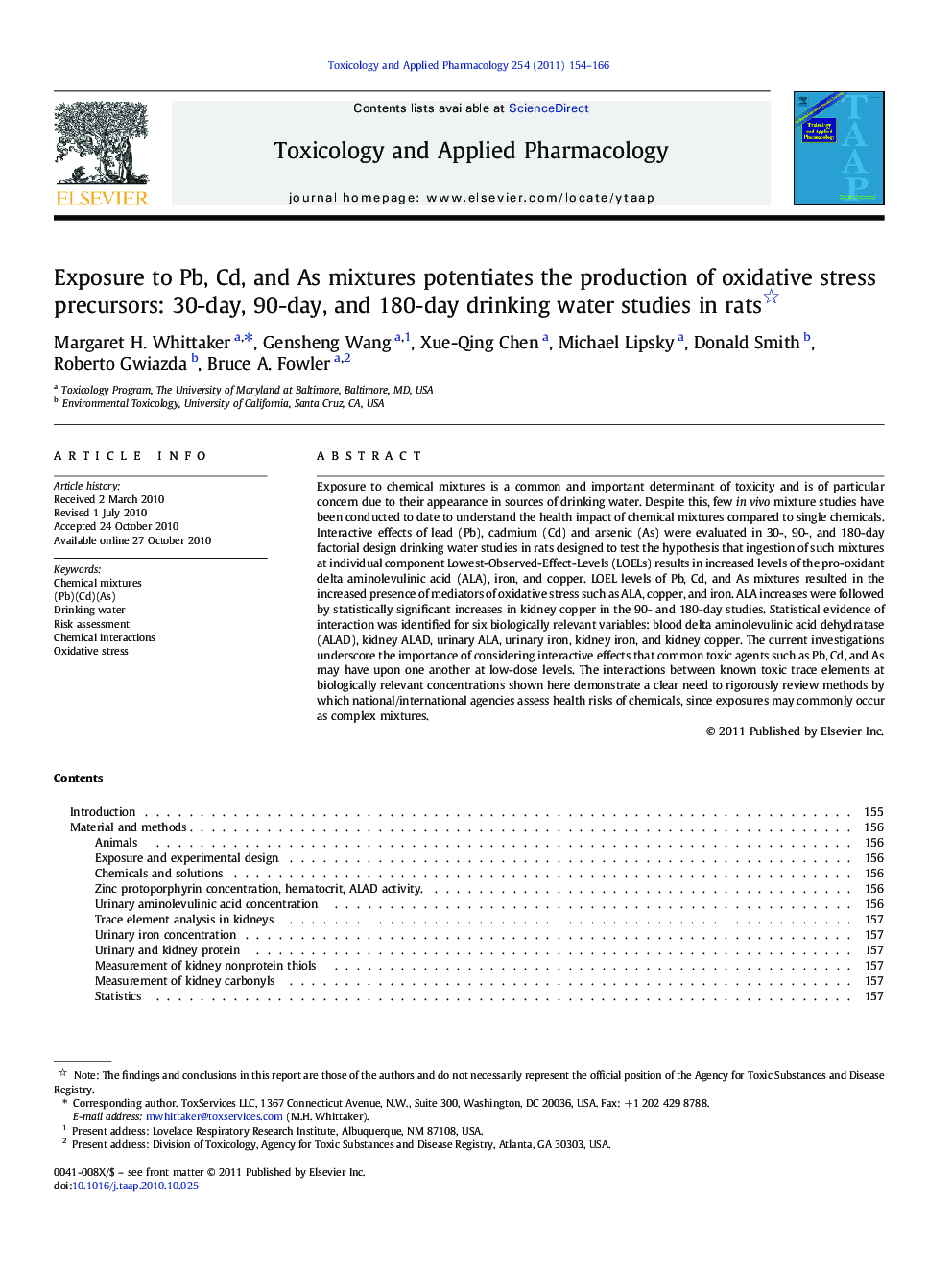| Article ID | Journal | Published Year | Pages | File Type |
|---|---|---|---|---|
| 2569435 | Toxicology and Applied Pharmacology | 2011 | 13 Pages |
Abstract
Exposure to chemical mixtures is a common and important determinant of toxicity and is of particular concern due to their appearance in sources of drinking water. Despite this, few in vivo mixture studies have been conducted to date to understand the health impact of chemical mixtures compared to single chemicals. Interactive effects of lead (Pb), cadmium (Cd) and arsenic (As) were evaluated in 30-, 90-, and 180-day factorial design drinking water studies in rats designed to test the hypothesis that ingestion of such mixtures at individual component Lowest-Observed-Effect-Levels (LOELs) results in increased levels of the pro-oxidant delta aminolevulinic acid (ALA), iron, and copper. LOEL levels of Pb, Cd, and As mixtures resulted in the increased presence of mediators of oxidative stress such as ALA, copper, and iron. ALA increases were followed by statistically significant increases in kidney copper in the 90- and 180-day studies. Statistical evidence of interaction was identified for six biologically relevant variables: blood delta aminolevulinic acid dehydratase (ALAD), kidney ALAD, urinary ALA, urinary iron, kidney iron, and kidney copper. The current investigations underscore the importance of considering interactive effects that common toxic agents such as Pb, Cd, and As may have upon one another at low-dose levels. The interactions between known toxic trace elements at biologically relevant concentrations shown here demonstrate a clear need to rigorously review methods by which national/international agencies assess health risks of chemicals, since exposures may commonly occur as complex mixtures.
Related Topics
Life Sciences
Environmental Science
Health, Toxicology and Mutagenesis
Authors
Margaret H. Whittaker, Gensheng Wang, Xue-Qing Chen, Michael Lipsky, Donald Smith, Roberto Gwiazda, Bruce A. Fowler,
